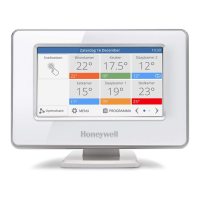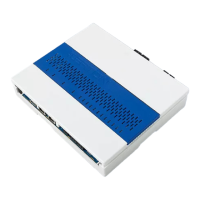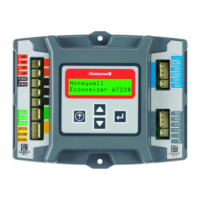PNEUMATIC CONTROL FUNDAMENTALS
ENGINEERING MANUAL OF AUTOMATIC CONTROL
60
Main line: The air line from the air supply system to controllers
and other devices. Usually plastic or copper tubing.
Manipulated variable: Media or energy controlled to achieve
a desired controlled variable condition.
Measuring element: Same as sensing element.
Mixed air: Typically a mixture of outdoor air and return air
from the space.
Modulating: Varying or adjusting by small increments. Also
called “proportional”.
Offset: A sustained deviation between the actual system
control point and its controller setpoint under stable
operating conditions. Usually applies to proportional
(modulating) control.
Proportional band: As applied to pneumatic control systems,
the change in the controlled variable required to
change the controller output pressure from 3 to 13
psi. Usually expressed as a percentage of sensor span.
Reset control: See compensation control.
Restrictor: A device in an air line that limits the flow of air.
Return air: Air entering an air handling system from the
occupied space.
Reverse acting (RA): A reverse-acting thermostat or controller
decreases the branchline pressure on an increase in
the measured variable and increases the branchline
pressure on a decrease in the variable. A reverse-acting
valve actuator retracts the shaft on an increase in
branchline pressure and extends the shaft on a
decrease in pressure.
Sensing element: A device that detects and measures the
controlled variable (e.g., temperature, humidity).
Sensor: A device placed in a medium to be measured or
controlled that has a change in output signal related
to a change in the sensed medium.
Sensor Span: The variation in the sensed media that causes
the sensor output to vary between 3 and 15 psi.
Setpoint: The value on the controller scale at which the
controller is set (e.g., the desired room temperature
set on a thermostat). The desired control point.
Supply air: Air leaving an air handling system.
Thermostat: A device that responds to changes in temperature
and outputs a control signal (branchline pressure).
Usually mounted on a wall in the controlled space.
Throttling range: Related to proportional band, and expressed
in values of the controlled variable (e.g., degrees,
percent relative humidity, pounds per square inch)
rather than in percent.
ABBREVIATIONS
The following port abbreviations are used in drawings of
relays and controllers:
B — Branch
C —Common
E — Exhaust
M — Main
O — Normally connected*
X — Normally disconnected*
P —Pilot (P
1
and P
2
for dual-pilot relays)
S — Sensor (S
1
and S
2
for dual-input controllers)
N.C. — Normally closed
N.O. — Normally open
* The normally connected and common ports are connected
on a fall in pilot pressure below the relay setpoint, and the
normally disconnected port is blocked. On a rise in pilot
pressure above the relay setpoint, the normally disconnected
and common ports are connected and the normally
connected port is blocked. Refer to Figure 37 in RELAYS
AND SWITCHES.

